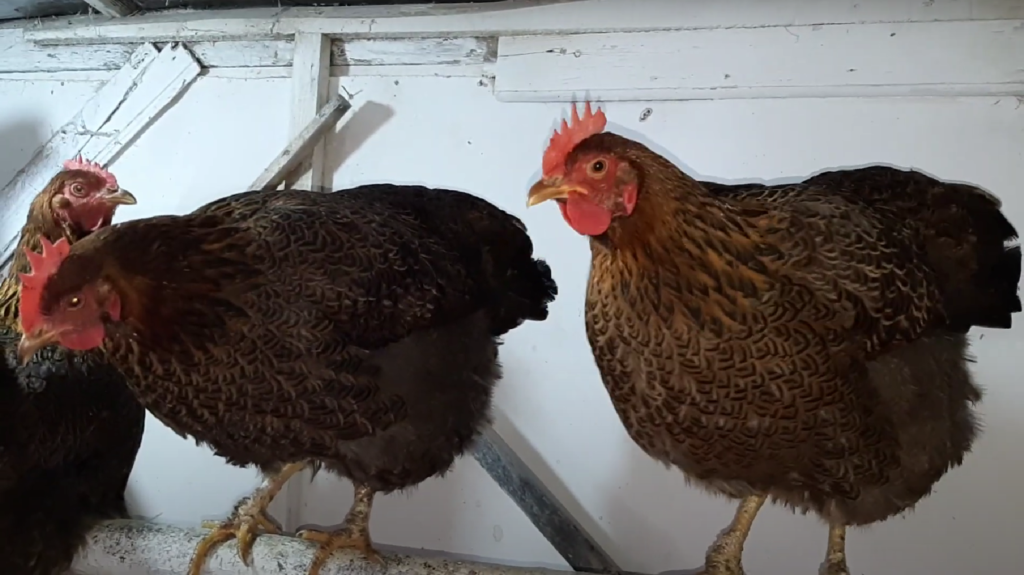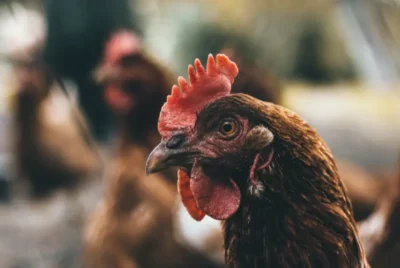Top Insights into the Partridge Rock Chicken Breed
The Partridge Rock chicken, treasured for its distinctive plumage and robust nature, excels in both egg laying and meat production. If you’re considering these chickens for your backyard farm, this guide provides essential information on their care, temperament, and the dual benefits they offer, helping you make an informed decision.
The Heritage of Partridge Rocks: A Historical Perspective
The Partridge Rocks, a variety of Plymouth Rock chickens, originated in Massachusetts in the 19th century. The breed owes its foundation to D.A. Upham who, in 1869, cross-bred Black Java hens with a single-comb rooster featuring barred plumage in Worcester, Massachusetts.
The Plymouth Rock breed was initially identified by its brown plumage with barred pattern, but its appearance and appeal broadened with the later introduction of the partridge pattern and other colors.
The breed’s history took a significant turn with the development of the Partridge coloring in Plymouth Rocks, achieved between the late 1800s and early 1900s. This milestone was reached by infusing genetics from Partridge Cochin chickens, which resulted in the magnificent Partridge Rock.
The Distinct Appearance of Partridge Rocks
The majestic appearance of Partridge Plymouth Rock roosters is truly captivating. They have:
- Lustrous greenish-black breast and bodies that glisten
- Hackle and saddle feathers that are black in color, edged in dazzling red
- Reddish bay patches on their wings
This combination of colors, including rich, brilliant red, creates an aura of elegance and majesty.
Partridge Plymouth Rock hens, on the other hand, boast a rich, reddish-brown color that exudes warmth and charm. Their feathers are black penciled, adding to their unique appearance.
The striking contrast between the roosters’ vibrant hues and the hens’ warm tones sets Partridge Rocks apart as a visually outstanding breed. Their stunning appearance makes them not only productive members of the farm, but also show-stopping attractions at any poultry show.
Read also: Majestic Sultan Chicken: Essential Care Tips for These Regal Birds
Living with Partridge Rocks: Behavior and Temperament

Partridge Rock roosters are calm and have a gentle temperament. Though usually placid, they can display aggression in self-defense if threatened or inadequately confined.
Partridge Rock hens exhibit a range of temperaments. Some are docile and friendly while others are inquisitive. If not handled frequently from a young age, they may act skittish when startled.
Generally, I recommend Partridge Rocks for beginners due to the typically friendly nature of the hens, the docility of the roosters, and their dynamic contribution to flock behavior.
Noise levels may vary among individuals, with some owners reporting them to be very vocal, while others do not find this a notable issue.
Raising Partridge Rocks: Coop and Space Requirements

You should consider space requirements when designing a coop for Partridge Rocks. A minimum of 15 square feet per chicken is necessary to provide ample room for movement and socialization.
The coop should have a solid foundation to guarantee stability. It can also be made mobile to facilitate relocation if necessary.
Partridge Rock chickens need a temperature-stable coop with adequate airflow to ensure their comfort and reduce moisture accumulation. You must tailor the insulation to the climate, with cold areas requiring insulation and possible heating and hot damp areas requiring ventilation without insulation.
Apart from the structural aspects, the coop should also include nesting boxes for egg laying and perches for roosting.
For the chicken’s safety, you should secure the coop and run from predators using proper fencing and possibly additional chicken wire.
Nutrition and Health: Feeding Partridge Rocks for Optimal Egg Production

To bolster their egg-laying abilities, Partridge Rock hens should receive a high-quality layer feed with a protein content of 16% to 18%. Both protein and calcium are crucial nutrients, particularly during peak laying periods and difficult seasons.
Supplementing their diet with additional calcium, such as oyster shells to ensure the production of strong eggshells.
While treats like mealworms can serve as a high-protein snack for Partridge Rocks, you should give it in moderation to avoid upsetting the balance of their diet. It is also important not to provide Partridge Rocks with feeds like oatmeal or crushed corn on a daily basis, as it can lead to a nutritional imbalance.
The Dual Purpose of Partridge Rocks: Eggs and Meat

Valued for both their meat and egg production, Partridge Plymouth Rock chickens serve as an excellent dual-purpose breed. As a sustainable heritage chicken breed, their dual productivity makes them an eco-friendly choice for small-scale farms and homesteads.
As prolific layers, these nice-eating fowl hens lay brown eggs, producing 250 to 280 quality brown eggs per year.
In terms of meat production, Partridge Plymouth Rocks offer a substantial yield with cocks and hens typically weighing 9.5 lbs and 7.5 lbs, respectively. Their feathering makes them easier to process.
The meat from Partridge Plymouth Rocks is tender and flavorful, attributes that contribute to their desirability for both egg and meat production purposes.
Caring for Your Flock: Health and Maintenance Tips
Partridge Rock chickens are recognized for their hardiness and are particularly well-suited for cold climates. Standard Partridge Rock roosters weigh about 9.5 pounds and hens around 7.5 pounds, ensuring that they are robust and healthy for their size.
In comparison with Rhode Island Red chickens, Partridge Rocks are docile, whereas Rhode Island Reds can be dominant and bossy in mixed flocks.
Planning Ahead: Understanding Ship Date and Flock Integration
Understanding the annually changing ship dates for baby chicks is crucial when considering the addition of Partridge Rocks to your flock. These dates can be found on a Chick Season calendar.
When integrating new Partridge Rock chickens into an existing flock, follow these steps:
- Introduce more than one hen at a time to prevent bullying and ensure they’re at least similar in size before mixing.
- Avoid adding new roosters to a flock with an established rooster to prevent conflicts.
- Match the temperament and size of new breeds with the existing flock.
Provide multiple food and water sources to reduce competition among chickens during integration and ensure ample roosting areas for younger chickens to escape. You should introduce new chickens through safe methods such as free-range, neutral ground meetups, or separate but visible enclosures, and monitor for several weeks for a new pecking order.
On average, Partridge Rock pullets typically start laying eggs between 18 and 20 weeks of age.
Summary
Partridge Rocks are an exceptional breed of chickens, known for their attractive appearance, dual-purpose nature, and friendly demeanor. They are a fantastic choice for beginners and experienced poultry enthusiasts alike, offering substantial egg and meat production, hardiness, and simple care requirements.




